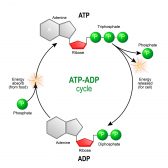Definition
noun, plural: galvanisms
(biology) Muscle contraction stimulated by an electric current
(medicine) Therapeutic application of electricity
Supplement
Galvanism, in general, is the generation of electricity by chemical means. In biology, the electricity is used to stimulate muscle contraction, and the state or the process of doing so is referred to as galvanism. In medicine, galvanism is the use of electricity for therapeutic purposes.
Galvanism is named after Luigi Galvani, a scientist that studied the effect of electricity on dissected leg frog. In 1786, he found that touching a frog’s legs with a copper probe and a piece of iron led to the twitching of the leg into the upward position. Initially, he accounted this phenomenon to the now-debunked vitalism theory. He left the idea though and next proposed the animal electricity theory where he presumed that electricity is generated biologically. Alessandro Volta, an Italian physicist and chemist, disproved Galvani’s theory with his discovery of the first chemical electric battery, implicating that electricity is generated by the presence of two different metals.1
The study of galvanism in biological context is called electrophysiology and Galvani is regarded as the father of electrophysiology.
Synonym(s):
- voltaism
See also:
Reference(s):
1 Galvanism. (n.d.). Wikipedia.org. Retrieved from ://en.wikipedia.org/wiki/Galvanism.







